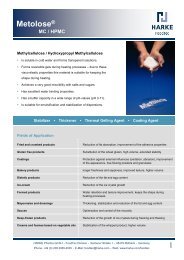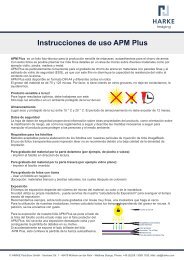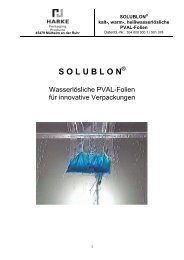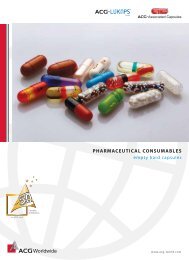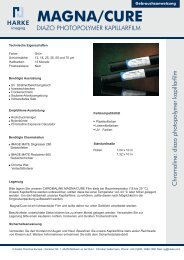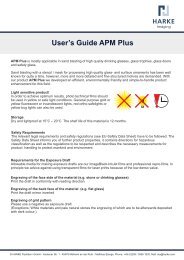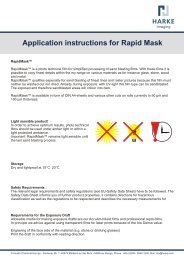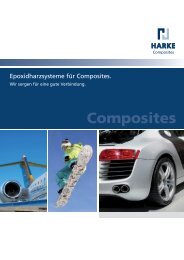Supply Program Flame Retardants - HARKE Group
Supply Program Flame Retardants - HARKE Group
Supply Program Flame Retardants - HARKE Group
Create successful ePaper yourself
Turn your PDF publications into a flip-book with our unique Google optimized e-Paper software.
8<br />
Mode of Action<br />
Phosphor compounds function in the gas phase by releasing<br />
highly effective scavengers that act as flame retardants through<br />
cutting-off the radical chain reaction. Furthermore, phosphoric<br />
acid dehydrates the polymer surface to a charred layer. This<br />
so-called carbon film prevents further feeding with oxygen, and<br />
thus impedes the advancement of the oxidate corrosion.<br />
The mechanism is especially effective with oxygenic polymers<br />
because of the combination of phosphoric acid ester with fillers<br />
like aluminium trihydrate a glassy slag is formed on the surface<br />
during fire.<br />
The organic trisphosphates can also be used in oxygen-free<br />
polymeres.<br />
The Chemical with a Double Effect<br />
When adding plasticisers as for instance diethylhexal phthalate<br />
(DEHP) the effect is that the combustibility of the plastic rises.<br />
This makes the use of flame retardants indispensable, therefore,<br />
diethylhexyl phthalate is often combined with inorganic flame<br />
retardants.<br />
Instead of using two chemicals you can change to only one.<br />
The phosphor compounds feature both the retardant effect and<br />
pasticising properties and thus counteract the brittleness of the<br />
plastic.




